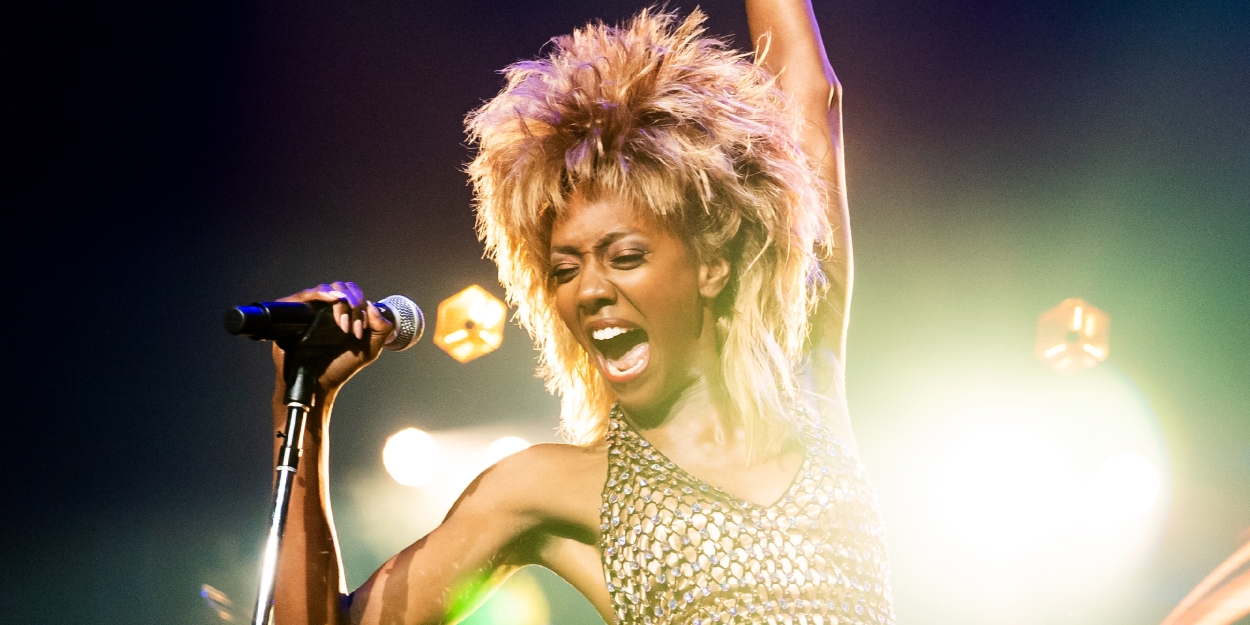Review: In THE TINA TURNER MUSICAL, the Jukebox Genre Tries for More Than Just Rags-to-Riches at the Dr. Phillips Center
The Queen of Rock & Roll's life and career ask the hits-machine format to do more than it's accustomed to, with mixed results but rousing entertainment...

|
|

What's plot got to do, go to do with it?
That might as well be the tagline of virtually every "jukebox biomusical," a term for all those shows that recount a celeb's rise to fame by featuring their hit songs. More often than not, radio tunes get crammed into storylines that only vaguely connect with the lyrical content, and the stories themselves are almost always the same. A decidedly unfamous person gets discovered and becomes a star, but with plenty of hardship and at least one cartoony know-nothing record exec along the way.
TINA: THE TINA TURNER MUSICAL got good reviews on Broadway, though, and earned 12 Tony nominations, including one win for Leading Actress in a Musical. That, coupled with my lifelong regret for never having seen the retired Queen of Rock & Roll in concert, led me into Dr. Phillips Center hoping it could be, as Ms. Turner sings, "better than all the rest."
I heard that famous chorus, alright, and dozens of other iconic Turner tunes. But while this show is meaningfully distinguishable, it's never quite "simply the best."
Notably, the musical is not directly adapted from the 1993 motion picture What's Love Got to Do With It? (which was itself based on the singer's 1986 autobiography, though Turner famously took issue with the film). But it does follow the same essential story beats.
Both the movie and the musical stand out because, while the rock legend ascends from rags to riches by the end, the story is less interested in Turner's journey to stardom than in her liberation from years of violent physical and emotional abuse at the hands of her husband and musical partner, Ike Turner.
The violence can be difficult to watch, especially because this show is especially good at making stage fighting feel real - no small feat. How much is too much is a question that audiences will have to answer for themselves, just as they did with the intense big-screen sequences thirty years ago. Turner's story is important and powerful, and it deserves more gravity than the crowd-pleasing, feel-good, pop-laden musical is able to give it.
Some songs work better than others. "Nutbush City Limits" is so effectively transformed as a church house ensemble song that it's initially unrecognizable as the 1973 funk classic. And "Don't Turn Around" plays more believably as a duet between a young girl and her grandmother than anyone familiar with that song might ever imagine it could. Others, like "I Can't Stand the Rain," seem to come out of nowhere.
In a dramatic low, the show scores and lights an excruciating fist fight between the two Turners like it's a wrestling match, with the audience cheering and booing along, after which a bruised Anna Mae (Turner's real name) sings "I Don't Wanna Fight No More" - a song that suits the moment in name only.
For the North American Tour, actresses Naomi Rodgers and Zurin Villanueva take turns as Ms. Turner. It was Villanueva in the iconic wig on opening night at Dr. Phillips Center, a performance astounding for its sheer energy alone. But Villanueva seems undecided as to whether her role is impersonation or performance, adopting the rock queen's distinctive affect at times but frequently dropping it in favor of Villanueva's own singing voice, weaving between the two like American actors whose put-on accents come and go during so many British plays. And while she does manage to capture a patina of the diva's one-of-a-kind sound, her Turnerisms occasionally compromise her own stunning voice.
Garrett Turner has the unenviable task of marrying Ike's innate charisma with all the inner turmoil and outward horror that he inflicts on Anna Mae. It can't be an easy or even desirable part to play (Laurence Fishburne famously turned down the movie role repeatedly before reluctantly taking the part), and occasionally Garret turns Ike's acrimony up to an 11 when it might feel even more piercing at an 8 or 9, but that hardly detracts from an otherwise nuanced performance. The show's expanded breathing room allows him to three-dimensionalize Ike in a way the movie struggled to (thus Fishburne's concern), helping audiences understand why Anna Mae - and Ike's audiences - were initially drawn to him. Garrett (who I refer to by first name, as he shares his character's last name in real life) makes that charisma feel immediate and real.
Less impressive is the set design, which is among the more sparing I have seen of any major Broadway tour, especially one of the jukebox genre, notorious for its bright-light razzle-dazzle. Save for a knee-jerk veer toward concert aesthetics at the tail-end of the show, THE TINA TURNER MUSICAL relies heavily on run-of-the-mill screen projections that are too frequently reminiscent of computer screensavers.
The show comes to Dr. Phillips Center mere days after Rolling Stone named Tina Turner one of the 200 best singers of all time. That fact feels indisputable, and it's probably fair to say that, for all its flaws, there's no better way to approximate the experience of seeing her on stage today than buying a ticket to this show, which runs here through January 15. You can do that by visiting The Dr. Phillips Center box office or the show's official website.
Videos
